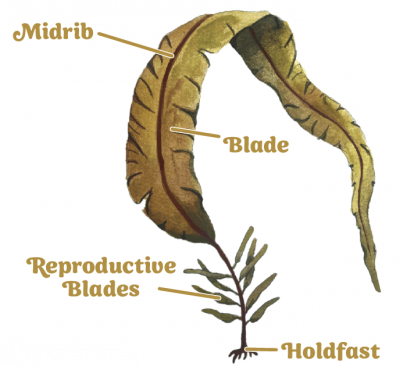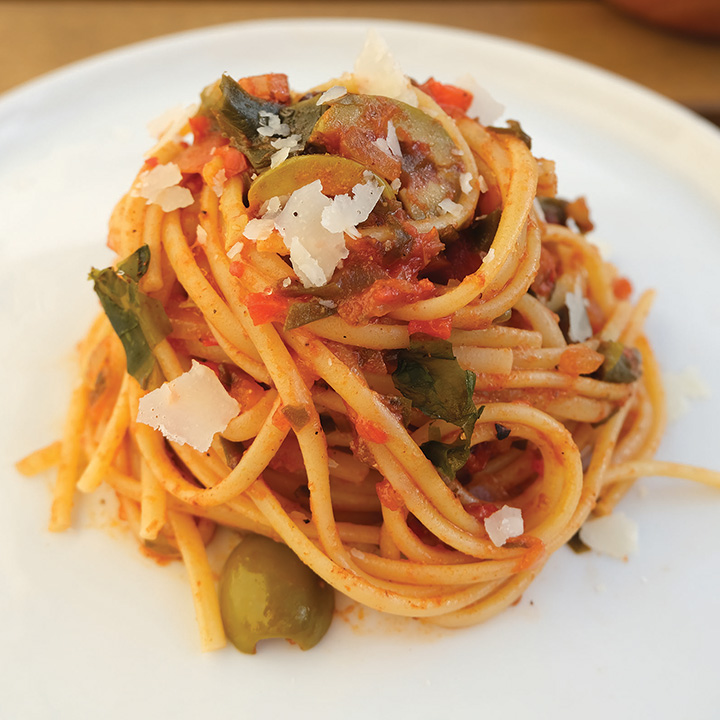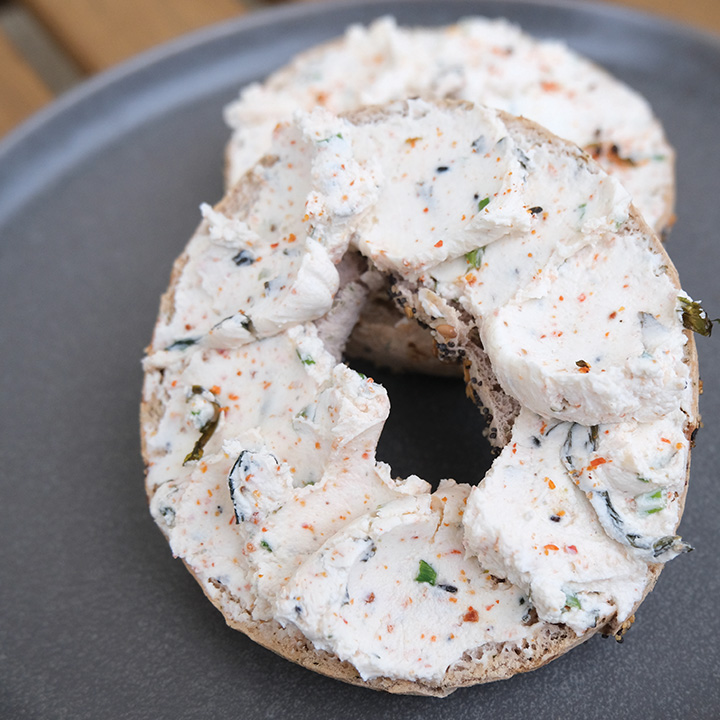
Profile
Winged Kelp (Alaria esculenta)
Winged kelp is a brown seaweed found just below the low-tide line in the North Atlantic. It clings to rocks and ledges with tiny claw-like holdfasts, forming thick beds. The blades can grow up to 2 meters long, are wavy and flexible, and split down the middle by a thick spine called a “midrib.” The kelp’s signature feature is its short, fluttery wings that grow at its base when reproductive.
Europeans and Native Americans have eaten this seaweed for centuries, and the Japanese have enjoyed its relative, wakame (Undaria pinnatifida), for thousands of years. For the Chukchi people of Siberia, the fresh midrib is a seasonal delicacy. Icelanders stored freshly harvested winged kelp in trenches with stones or oak planks on top as a winter feed supplement for their dairy cows.
Seaweed farming is the fastest-growing aquaculture sector in the US. Maritime workers, like lobster fishermen, sometimes farm seaweed in the off-season to supplement their income. Supporting local seaweed farmers provides tasty sea vegetables, diversifies farming operations, and creates new business opportunities. It's a win-win for your taste buds and the economy!
 Flavor Profile (notes and cooking tips)
Flavor Profile (notes and cooking tips)
Vegetal, oceanic, and savory
Texture
Blades are thin and tender, midrib is fibrous with a crisp bite
Preparation Tips
The blades and midrib of winged kelp have distinct textures, densities and cook times so it's best to separate them as you would a kale leaf from its stem. Use kitchen shears to cut the blades along both sides of the midrib before storing or cooking. To soften the fibrous texture of the midrib, simmer for 10-20 minutes.
Where is it Farmed?
Ocean-based farms in New England
Harvest Season
Late spring to early summer
Nutrition
Rich source of calcium, magnesium, iron, potassium, iodine, fiber and vitamins A, B, B-12, C, folacin, and niacin.
Storage Tips
Refrigerate and consume fresh kelp within 5 days of harvest. To prolong shelf life, freeze or dry in dehydrator and store in a cool, dry place.
Environmental Benefits
Absorbs CO2 from the ocean and produces oxygen, provides shelter to commercially important fish and invertebrates, and protects coastlines from erosion.
Recipes

Winged Kelp Puttanesca
Recipe by Claire Bastarache, kelp sourced from Spartan Sea Farms
Equipment: 1 quart canning jar
Ingredients
- 1/2 cup of rinsed fresh winged kelp - small rough chop
- 1 small white onion - finely diced
- 1 red pepper - finely diced
- 4 garlic cloves - finely diced
- 1/2 cup of mixed olives - cut in half
- 2 14.5 oz cans of crushed tomatoes
- salt & pepper to taste
- paprika or crushed chili flake - optional
- linguine
Directions
- Sauté winged kelp, onion, garlic, pepper, and olives together in a pot with olive oil on low to medium heat until the onions are translucent.
- Add in tomatoes, salt and pepper, and spices and let simmer on low for 30-40 minutes, stirring often.
- While the sauce continues to simmer, cook pasta until it’s al dente, 8-10 minutes.
- Strain pasta and add to the simmering sauce to continue cooking, about another 5-8 minutes. Serve with parmesan cheese.

Winged Kelp Togarashi Whipped Cream Cheese
Recipe by Claire Bastarache, kelp sourced from Spartan Sea Farms
Ingredients
- 12 oz cream cheese
- 2 tbsp of diced chives
- 3 tbsp crispy baked ribbon kelp - finely diced
- 2 tsp togarashi
Directions
To prepare fresh ribbon kelp
- Rinse fresh ribbon kelp well before lightly tossing in a neutral oil, such as avocado or sesame.
- Bake at 400°F for 5-10 minutes or until crispy to the touch.
To prepare cream cheese
- Combine all the ingredients in a bowl and use an electric mixer to beat on medium speed, then increase to high for 1-2 minutes. Scrape the sides as needed.
- Serve on a toasted bagel, with crackers, on a charcuterie board, or with veggies.